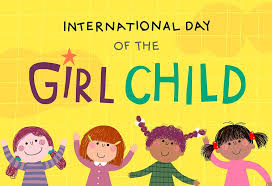As someone who invests in books, ensuring your children know how to properly handle books is crucial to ensure no damage is done to the books. Handling a book right is as important in helping to protect your investment and teaching your kids the right way to handle a book either while reading them or in storage. This will also help them develop a sense of responsibility. Here are a few tips on teaching your kids the right way to handle a book.
1. Have book storage
Create book storage like a bookshelf. This will help you keep books in good condition. Teach your little ones to always store their books after reading at all times. This will help will protect the books from trampling and tearing. Shelves, as well as decorated boxes and box lids, also make good places to keep books. You could let each of your children keep some books that they especially enjoy in their box and then keep books that the whole family enjoys in a separate box.
2. Set an example
Children learn more by watching what adults do than by listening to adults tell them what to do. So, if you don’t treat books well, you can’t expect children to do so! Encourage your children to care for books by showing them how to do so. For example, when you are reading to them, turn the pages carefully, and when you have finished reading a story, return the book to its place on the bookshelf − and sometimes, ask your child to do this for you.
3. Learn to love books – Unless you love a book, you can hardly appreciate the value. Make your children learn to love their storybooks, we cannot expect them to treat the books that hold these stories as treasures that need to be taken special care of. When you spend time reading stories with children, they soon learn to associate their enjoyment of these times with books.
4. Be reasonable
Be reasonable with your expectations when dealing with children. Monitor them closely and gently correct them. Speaking harshly to them when they make a mistake can result in avoiding reading books entirely. They need to spend time looking at or reading books on their own because this helps them to understand how books work – an essential ingredient to learning to read. We don’t want our children’s books to look like they did when they first came from the shop because that would mean that they aren’t being used! It is natural for books that are read again and again to show signs of wear-and-tear after a while. What we need to encourage in our children is age-appropriate book behavior. For example, it is completely “normal” for babies to chew the corners of books – because they tend to put everything into their mouths – but we wouldn’t expect three-year-olds to do this. And it is reasonable to expect seven-year-olds to turn the pages of a book gently, but many three-year-olds do not have enough fine motor co-ordination to do this yet – especially if they are engrossed in a story!
5. Keep it Simple
Let your rules be simple. Make rules that are easy to understand and follow. Remember, you are dealing with kids. For example, “Let’s keep water and things we eat away from books because if we spill on our books, they will get damaged.” Also, “Let’s make sure our hands are not sticky when we look at books because if some of the pages stick together we won’t be able to read the whole story!”
Most importantly, always remember that teaching a child takes time, patience, and encouragement.
Happy Reading!!
Love Chelis Bookazine




